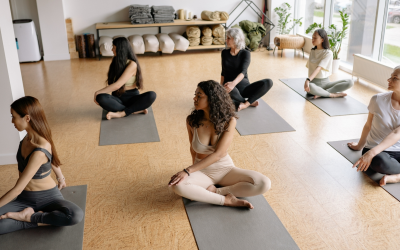If you’re preparing to teach your first group fitness class, congratulations—you’re stepping into one of the most rewarding roles in the fitness industry. Whether your class is choreographed like a Les Mills program or freestyle, your presence, preparation, and personality will define the experience.
After 25 years of teaching, AAAI/ISMA faculty instructor Joanne Smith-Taverner shares her top tips to help new instructors lead safe, effective, and fun classes from day one.

1. Practice, Practice, Practice
This one can’t be overstated. When you’re in front of a class, you’re there to teach, not to practice. Your preparation should happen long before participants arrive.
Joanne recommends rehearsing your routines in front of a mirror while cueing—again and again—until the movements and words flow naturally. The goal is to know your material so well that you can focus fully on your participants, not on remembering what comes next.
And always have a Plan A, B, and C. Things will go wrong—music glitches, room changes, missing equipment—so stay flexible and ready to adapt with confidence.
2. Arrive Early and Set the Tone
Professionalism starts before the first song plays. Arrive early, set up your space, and greet participants as they come in. Play upbeat music before class begins—it signals that something fun and energetic is about to happen.
As Joanne says, “People come to class to forget their problems. This is their one hour of me time.” Create an environment that feels welcoming and positive. That means leaving your personal stress outside and showing up fully for your participants.
3. Build Connection and Community
New participants often feel nervous. Make it a point to introduce yourself, learn their names, and pair them with a regular who can help them feel at home. This simple act builds instant connection and increases the likelihood they’ll return.
After class, check in with newcomers: “How did that first class feel? Don’t worry if you missed a few moves—everyone starts there. You’ll get it with practice!” Encouragement creates belonging, and belonging drives consistency.
4. Communicate Clearly and Cue Early
Your communication skills will make or break the class experience. Always cue before the movement happens, not during or after. Anticipatory cues—like “In four counts, we grapevine right!”—keep everyone in sync and prevent frustration.
Visual and verbal clarity are equally important. Use phrases like “Tell, show, do”—tell them what’s coming, show it, then do it together. Move around the room so everyone can see you, and use self-checks (“Let’s all look at our knees—are they tracking over our shoelaces?”) instead of singling people out.
5. Stay Professional and Keep Learning
From your attire to your playlist, every detail contributes to your credibility. Dress appropriately for the setting, choose inclusive and upbeat music without profanity or offensive lyrics, and always model professionalism.
Finally, never stop learning. Attend other instructors’ classes, seek feedback, and keep your certifications current. Joanne reminds us that “teaching group fitness is both an art and a science.” The best instructors blend knowledge, creativity, and care to help others move better and feel stronger.
Final Thoughts
When you’re leading a class, you’re more than just a fitness instructor—you’re a motivator, educator, and role model. Prepare thoroughly, show up early, connect authentically, cue clearly, and keep growing.
Because when your participants feel seen, supported, and successful, they’ll keep coming back—and that’s where the true magic of group fitness begins.
Don't Stop Now
The Missing Link in Client Results
Every fitness professional has seen it happen. A client shows up consistently. They train hard. They follow the plan. And then one day — the progress stops. They’re not getting weaker or less motivated, but the results slow down, stall, or completely plateau. And no...
What Every Trainer Should Know About Mental Wellness
The Numbers Don’t Lie 94% of personal training clients regularly discuss nutrition, stress, sleep, and injury with their trainers. 78% of people prioritize exercise for mental and emotional well-being. 89% of peer-reviewed studies confirm a positive, statistically...
Healing Starts with Slowing Down
When it comes to helping people improve their physical, emotional, and mental well-being, certified personal trainer and wellness coach Jessica Lewis takes a holistic approach. Through her work with both veterans and civilians, Jessica uses the gentle yet powerful...


